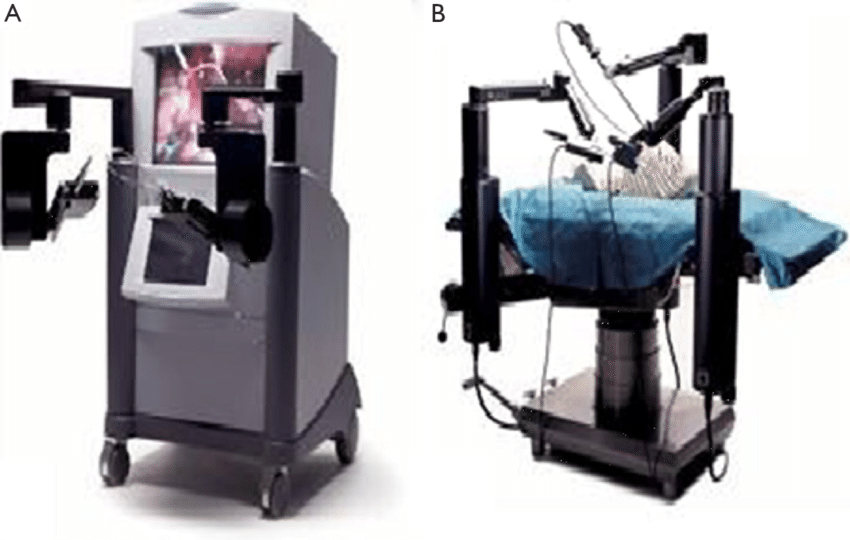Common Telemedicine Applications in Surgery
Telemedicine applications in surgery can help alleviate the shortage of physicians and increase access to specialized services in remote, underdeveloped regions
Tele-Consultation, Tele-Mentoring and Tele-Surgery are common telemedicine applications in surgery
Newer telecommunication technologies, more telemedicine-friendly legislation and advancements in robotics can help remove some of the barriers for adopting telemedicine in surgery
January 29, 2021 — Telemedicine is about delivering quality medical care at a distance, to increase access to specialized care. We know that limited access to specialized medical care in the US is a current problem, and it is expected to worsen over the next decade. By 2032, the US will lack as many as 23,000 surgeons, making the expected shortage of physicians a worrisome issue given a growing, aging population with increasingly complex health needs (1)
The word surgeon may elicit thoughts and images of professionals in the operating room, but this is only a dimension of the surgical spectrum. There are educational needs as well as a consultative role as matter experts in this field. A shortage of surgeons can have a tremendous (negative) impact in our health care system.
Every Year Many Surgical Procedures Are Not Performed Because Of Lack Of Qualified Surgeons (2)
Telemedicine can be used to help alleviate some of these problems. Telecommunication technology can be used to educate and train surgeons remotely. This technology can also help connect surgeons with their patients, or with peers, remotely for consultations and to maintain continuity of care. In combination with the field of robotics, telemedicine can enable surgical procedures at a distance.
We don’t have to wait for this to happen, as these applications have been in place for decades. In this article I will describe three telemedicine applications in the field of surgery.
Surgical Tele-Consultations
Surgical consultations are essential to the delivery of comprehensive medical care. There are circumstances in which access to surgical expertise is limited, such as rural communities, the military, areas impacted by natural/chemical/biological disasters, or even space/NASA. Teleconsultations offers a solution by removing distance and geographic barriers for both patients and physicians.
The following are common applications of surgical tele-consultations:
Routine consultations and second opinions
Evaluation and triage of surgical patients in emergency situations
Intra-operative peer-to-peer consultations
Pre and post operative patient care, including home care
Surgical Tele-Mentoring
There are a number of ways in which surgeons can teach and learn procedures including: hands-on training, fellowships, or in-house mentoring programs. However, many surgeons can’t benefit from these opportunities because of barriers such as costs, time commitment (fellowship training length can range from 1 to 3 years) and the need for skilled mentors.
As technology advances and minimally invasive procedures become standard of care, general surgeons continue to perform a growing number of increasingly specialized procedures. Thus, the ability to be mentored, trained and guided during procedures becomes essential. Telemedicine can facilitate the training and guidance of surgeons by skilled mentors when needed and where is needed.
Cubano et.al. (1999) published the use of long distance telementoring to link surgeons in Maryland and California with the surgery team aboard the USS Abraham Lincoln Aircraft Carrier (cruising the Pacific Ocean at the time). A total of five laparoscopic inguinal hernia repairs were successfully completed under the mentorship of surgeons thousands of miles away (3).
Credit: Lacy AM, Bravo R, Otero-Pineiro AM, et al. 5G-assisted telementored surgery. Br J Surg. 2019;106(12):1576-1579
Tele-Surgery
Defined as remote robotic-assisted surgery, controlled by a distant physician. This concept is not new and began over 50 years ago (4).
Tele-surgery has many benefits to both patients and surgeons:
Expand surgical services to remote and hostile environments (areas in conflict, space, military)
It is convenient for patients who can receive surgical treatment within their communities, close to families and caregivers
It is convenient for surgeons as a way to avoid/limit time traveling
Examples of Surgical Robots
ZEUS ® Robotic Surgical System
1998 — Used for the first full endoscopic robotic fallopian tube reanastomosis (5)
2001 — Dr. Marescaux performed a TransAtlantic laparoscopic cholecystectomy on a 68-year-old lady in Strasbourg, France, using a ZEUS robotic system positioned in New York USA (4)
Da Vinci ® Robotic Surgery
1998 — the first da Vinci ® robotic surgery was performed (a robot-assisted heart bypass, in Leipzig, Germany)
2000 — da Vinci ® robot was awarded FDA approval in the USA for use in laparoscopic procedures (5)
The Da Vinci ® Robotic Surgery is currently, the most prominently available multipurpose robotic surgery system (4)
Barriers to Telemedicine application in Surgery
Latency time during the audio-visual feed of the surgery
Cost-effectiveness of the technology (too expensive)
Limited broadband and high-speed connections in remote, underdeveloped regions
Legal implications and liability
Concerns about safety, security and privacy
Work in Progress
Telemedicine applications in surgery can help solve the issues of physician shortage and limited access to specialized care. Many of the barriers to tele-surgery can be addressed with newer technology and more telemedicine-friendly legislation. The COVID-19 public health emergency helped demonstrate the usefulness and effectiveness of telehealth and telemedicine. It is now difficult for lawmakers and other stakeholders to ignore the need for support of telemedicine initiatives.
As always, feel free to contact me if you have any questions or comments.
References
Haskins J. 2019. Desperately seeking surgeons. AAMC News. https://www.aamc.org/news-insights/desperately-seeking-surgeons Accessed: 01/29/2021
Lacy AM, Bravo R, Otero-Pineiro AM, et al. 5G-assisted telementored surgery. Br J Surg. 2019;106(12):1576-1579 https://doi.org/10.1002/bjs.11364
Cubano M, Poulose BK, Talamini MA, et al. Long distance telementoring. A novel tool for laparoscopy aboard the USS Abraham Lincoln. Surg Endosc. 1999;13(7):673-678. https://doi.org/10.1007/s004649901071
George EI, Brand TC, LaPorta A, Marescaux J, Satava RM. Origins of Robotic Surgery: From Skepticism to Standard of Care. JSLS. 2018;22(4):e2018.00039. https://doi.org/10.4293/jsls.2018.00039
Yates DR, Vaessen C, Roupret M. From Leonardo to da Vinci: the history of robot-assisted surgery in urology. BJU Int. 2011;108(11):1708-1713; discussion 1714. https://doi.org/10.1111/j.1464-410x.2011.10576.x


